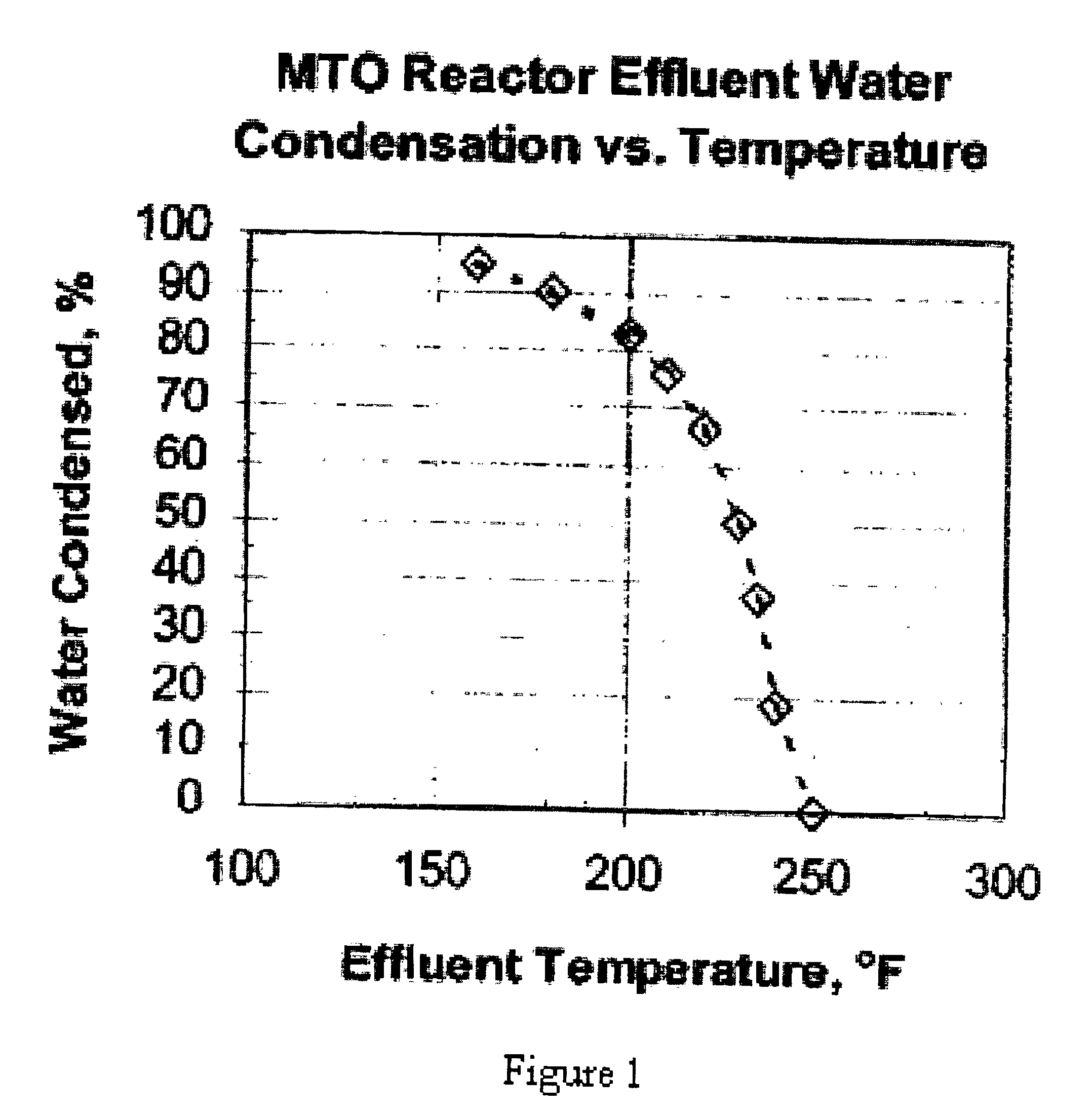Heat recovery in an olefin production process
a technology of heat recovery and olefins, which is applied in the direction of catalytic naphtha reforming, organic chemistry, hydrocarbon preparation catalysts, etc., can solve the problems of catalysts being subjected to great mechanical stresses, nitrogen and sulfur impurities that require expensive purification steps, and olefins from an oto process involve unique technical challenges
- Summary
- Abstract
- Description
- Claims
- Application Information
AI Technical Summary
Benefits of technology
Problems solved by technology
Method used
Image
Examples
example 1
A feed stream containing 99 wt % methanol and 1 wt % water is fed into an OTO reactor containing a SAPO-34 catalyst. The reactor is operated at a temperature of 923° F. (495° C.), a pressure of 40 psia (280 kPa), and a 95% methanol conversion. Components in the effluent stream exiting the OTO reactor, and their flow rates, are shown in Table 1.
TABLE 1Gaseous Effluent StreamVapor, wt %Hydrocarbon &42.5Oxygenates,Water,57.5Total Vapor,100.0Fines, (PPM)100Fines Particle Size Distribution (PSD)Cumulative wt %Particle SizeLess thanMicrons0.010.11.00.25.00.410.00.530.00.950.01.470.02.990.016.895.020.599.027.1
The effluent stream is in the vapor phase, with catalyst fines entrained in the vapor comprising 0.01 wt % of the entire effluent stream. The particle density of the catalyst fines is 75 lb / ft3 (1.2 g / cc).
FIG. 1 shows the percent of condensed water in the effluent stream versus temperature at 40 psia (280 kPa).
In heat exchangers and other equipment downstream from the reactor prior to...
example 2
The gaseous effluent stream described in Table 1 is conveyed to a quench device at about 40 psia (280 kPa). FIG. 1 shows that with an OTO effluent stream given in Table 1, the condensation of water is prevented by keeping the temperature of the effluent stream above about 250° F. (120° C.) while it is being conveyed to a quench device. Therefore, the temperature of the effluent stream is dropped down to a temperature of 250° F. (120° C.) without mud forming in equipment prior to entering the quench device. The effluent stream then enters the quench device operating at a pressure of about 40 psia and is quenched to rapidly cool the effluent stream to 200° F. (93° C.) causing more than about 80% of the water in the effluent stream to condense. The catalyst fines leave the remaining gas phase of the effluent stream and enter the dilute liquid phase of the condensed water. Since there is a large amount of condensed water relative to the amount of catalyst fines, mud is not formed in the...
PUM
| Property | Measurement | Unit |
|---|---|---|
| wt % | aaaaa | aaaaa |
| wt % | aaaaa | aaaaa |
| wt % | aaaaa | aaaaa |
Abstract
Description
Claims
Application Information
 Login to View More
Login to View More - R&D
- Intellectual Property
- Life Sciences
- Materials
- Tech Scout
- Unparalleled Data Quality
- Higher Quality Content
- 60% Fewer Hallucinations
Browse by: Latest US Patents, China's latest patents, Technical Efficacy Thesaurus, Application Domain, Technology Topic, Popular Technical Reports.
© 2025 PatSnap. All rights reserved.Legal|Privacy policy|Modern Slavery Act Transparency Statement|Sitemap|About US| Contact US: help@patsnap.com

